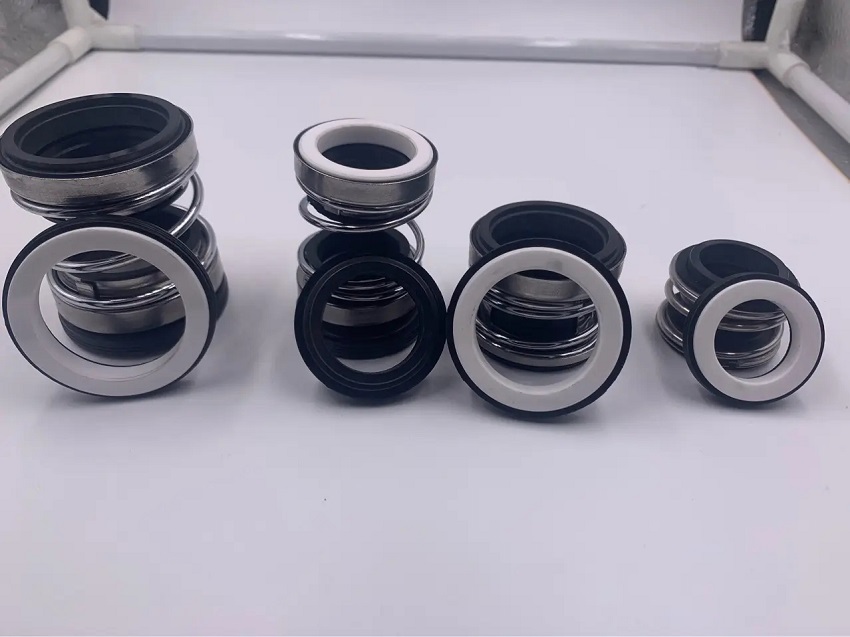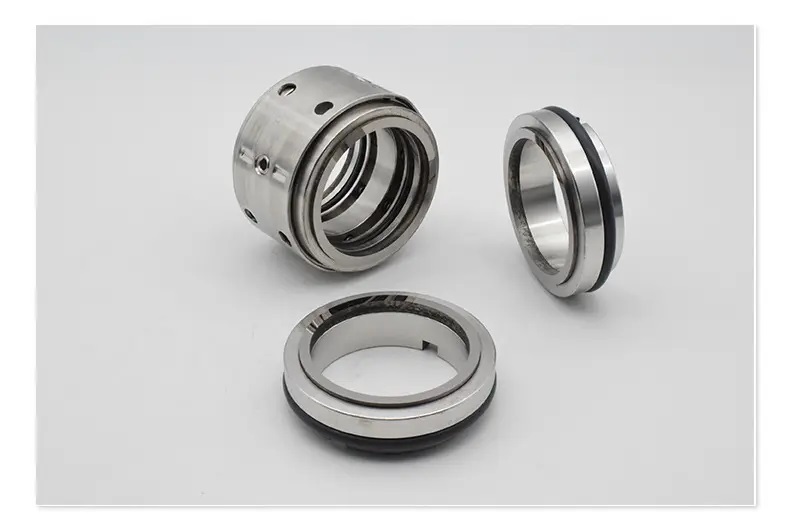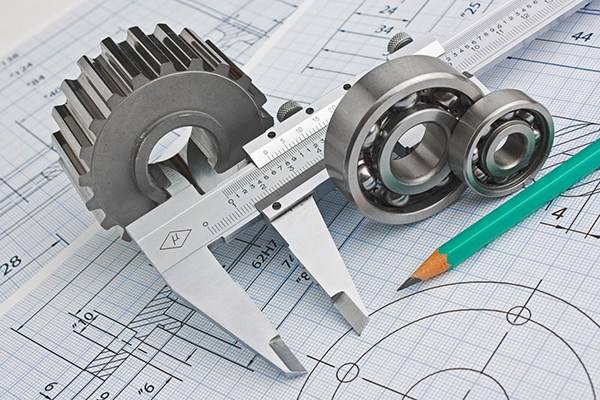Mechanical seals are one of the precision and complex mechanical basic components, and are key components of various pumps, reaction synthesis kettles, turbine compressors, submersible motors, and other equipment. Its sealing performance and service life depend on many factors, such as selection, machine accuracy, correct installation and use, etc
1、 Selection method:
The main parameters for selecting mechanical seals include sealing chamber pressure (MPA), fluid temperature (℃), working speed (M/S), fluid characteristics, and effective space for installing seals.
According to different working conditions and media properties, mechanical seals include high-temperature and low-temperature resistant mechanical seals, high-pressure and corrosion-resistant mechanical seals, granular medium resistant mechanical seals, and mechanical seals suitable for light hydrocarbon media that are prone to vaporization. Mechanical seals with different structural types and materials should be selected according to different uses.
The basic principles of selection are:
1: Based on the pressure of the sealing chamber, determine whether the sealing structure adopts balanced or unbalanced, single or double end faces, etc.
2: According to the working speed, determine whether to use rotary or stationary, fluid dynamic or non-contact.
3: Based on temperature and fluid properties, determine the friction pair and auxiliary sealing materials, as well as correctly select mechanical sealing cycle protection systems such as lubrication, flushing, insulation, and cooling.
4: Based on the effective space for installing the seal, determine whether to use multiple springs, single springs, or waveform springs, internal or external.
2、 Installation and usage requirements for mechanical seals:
1: Requirements for Machine Accuracy of Mechanical Seals (Taking Mechanical Seals for Pumps as an Example)
(1) The maximum radial runout tolerance of the shaft (or shaft sleeve) in the installation of mechanical seals shall not exceed 0:04-0:06mm.
(2) The axial displacement of the rotor shall not exceed 0:3MM.
(3) The maximum runout tolerance of the positioning end face of the sealing chamber combined with the sealing end cover to the surface of the shaft (or shaft sleeve) shall not exceed 0:04-0:06mm.
2: Confirmation of sealing components
(1) Confirm whether the installed seal matches the required model.
(2) Before installation, carefully compare with the final assembly drawing to ensure that the number of parts is complete.
(3) Mechanical seals that use parallel coil spring transmission have springs that can rotate left or right, and must be selected according to the direction of rotation of the shaft.
3: Installation
The installation method varies depending on the type of mechanical seal and the type of machine, but the installation essentials are almost the same. The installation steps and precautions are as follows:
(1) When determining the installation size, it is necessary to follow the product manual or sample to ensure the installation size of the mechanical seal.
(2) Before installation, the shaft (sleeve) and pressure cover should be free of burrs and the bearings should be in good condition; Seals, shafts, sealing chambers, and glands should all be cleaned thoroughly.
To reduce friction resistance, a thin layer of oil should be applied to the area where the mechanical seal is installed on the shaft for lubrication. Considering the solubility of the rubber O-ring, if oil is not suitable, soapy water can be applied.
The floating static ring structure without anti rotation pin should not be coated with oil and should be dryly installed into the pressure cover.
(3) First, install the static ring and pressure cover together on the shaft, taking care not to collide with the shaft, and then install the dynamic ring component. The fastening screws of the spring seat or transmission seat should be tightened evenly in several times.
Before fixing the cover, manually push the compensating ring for axial compression. After loosening, the compensating ring can automatically rebound without any jamming phenomenon, and then lock the cover bolts evenly.
4: Using
(1) When the temperature of the conveying medium is too high, too low, or contains impurity particles, which are flammable, explosive, or toxic, corresponding measures such as blocking, flushing, cooling, and filtering must be taken.
(2) Before operation, manually turn the car and pay attention to whether the torque is too high, whether there is any friction or abnormal sound.
(3) Pay attention to the rotation direction, whether the coupling is aligned, whether the lubricating oil in the bearing area is added appropriately, and whether the piping is correct.
(4) Whether the work is normal and stable after driving, whether there is any abnormal torque caused by shaft rotation, as well as abnormal noise and overheating phenomenon.
(5) Before operation, first open the medium and cooling water valves, check whether the gas in the sealing chamber is completely discharged to prevent leakage caused by static pressure, and then start the machine for operation.





